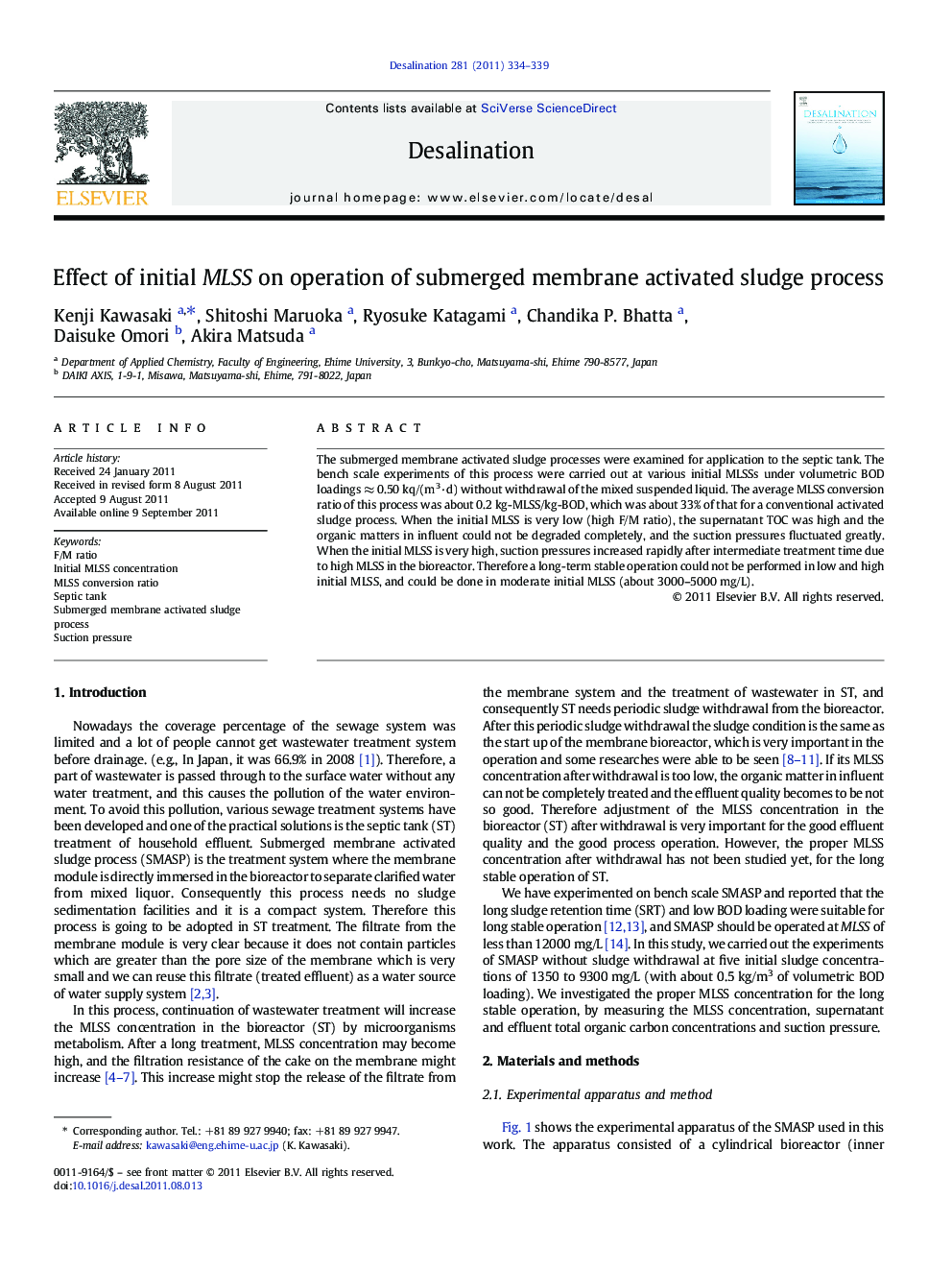| Article ID | Journal | Published Year | Pages | File Type |
|---|---|---|---|---|
| 624801 | Desalination | 2011 | 6 Pages |
The submerged membrane activated sludge processes were examined for application to the septic tank. The bench scale experiments of this process were carried out at various initial MLSSs under volumetric BOD loadings ≈ 0.50 kq/(m3·d) without withdrawal of the mixed suspended liquid. The average MLSS conversion ratio of this process was about 0.2 kg-MLSS/kg-BOD, which was about 33% of that for a conventional activated sludge process. When the initial MLSS is very low (high F/M ratio), the supernatant TOC was high and the organic matters in influent could not be degraded completely, and the suction pressures fluctuated greatly. When the initial MLSS is very high, suction pressures increased rapidly after intermediate treatment time due to high MLSS in the bioreactor. Therefore a long-term stable operation could not be performed in low and high initial MLSS, and could be done in moderate initial MLSS (about 3000–5000 mg/L).
► Submerged membrane activated sludge processes (SMASP) can be used as a septic tank. ► Here, SMASP were carried out under BOD loadings ≈ 0.50 kg/(m3·d) without withdrawal. ► The average MLSS conversion ratio of this process was about 0.2 kg-MLSS/kg-BOD. ► A long-term stable operation can be done in moderate initial MLSS (3000–5000 mg/L).
